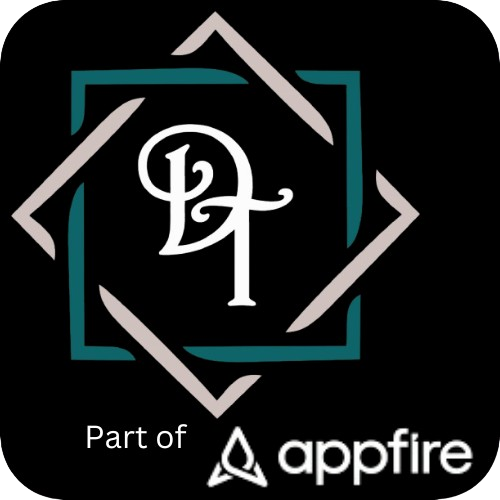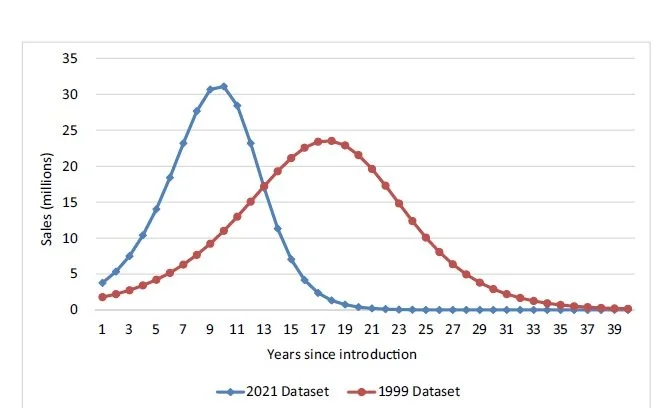Why Point A is vital for Atlassian
Atlassian has been developing software for over twenty years, with Jira first coming out in 2002. Since then they have seen huge amount of ups with a few downs here and there. The trouble with all of this is that the software & therefore the business itself has a lifespan. An expiry date in which the product now is obsolete. So how does any company continue to not only make their existing products relevant, but continue to invest and create new products, keeping the company at the cutting edge?
A product’s & company’s life
While I really hate to reference my time at school, annoyingly that bell curve and standard deviation we all hated studying in maths, really comes in here.
Credit: https://www.linkedin.com/pulse/technology-adoption-life-cycle-caio-felipe-santos-matos/
When a company first launches a product, that product will go through the above bell curve. At the start, you always have the ‘early adopters’. Those that love the new things. Those that don’t care if something isn’t 100%. As the product continues to grow, more and more users come on board, noticing its power etc. Once we hit enough features & a full product can be made, you often see a steep increase in growth as users gain confidence in the company. But overtime, competitors may come through, challenges may change and since your user base has grown, your number of new potential customers shrinks.
Credit: https://developmentcorporate.com/2021/10/14/how-has-technology-adoption-life-cycle-been-shortened-in-2021/
In 2021, John Mecke writes how those early years in a product life are becoming ever more prevalent for success. In 1999, it was far more of an even bell curve. But as of 2021, the studies display a significant shift and distortion in the increase in both adoption of a product and its end.
From product to company
A product is one thing, but a company is another. A company may produce a few great products over their life that they are known for. So do companies also have a life? Well short answer, Yes! But there is a slight difference.
Credit: https://www.manrajubhi.com/4-stages-of-a-business-life-cycle/
The early adopters, and initial product launches would have helped push the company from that first introduction stage into the growth stage. As the company continues to grow, they may launch new products like Confluence or acquire companies (StatusPage, Opsgenie & Bitbucket) to continue their growth in a market and help push away that decline.
Unfortunately, a company will eventually go through its maturity and come out the other side. This will mean a decrease in new customers, and decrease in overall profit.
Some companies can strike gold. With a great understanding of their customer base & their market, they may make new software or release a new product, extending their influence in a market and extending the lifecycle to start again.
So how does this relate to Atlassian?
While I am sure that anyone that has had Atlassian be a huge part of their career (including myself) hopes this day never comes, there is a day that Atlassian will topple on that decline. Unfortunately this is inevitable. Right now there is no sign, but lets dive into how Atlassian are keeping themselves in maturity or constantly extending their lifecycle.
Point A
For those not in the loop, Point A and their success is exactly how Atlassian is extending that lifecycle. As Atlassian have continued their brilliant growth over the last 20+ years, the more recent have been in my opinion a struggle. Personally as a consumer, I saw a large drop in what we would call the wow features coming through. Everything seemed to just take that additional time, causing frustration both internally and externally. The trouble is that Atlassian at the time only had an eye on their current product suite. So how does a company enable itself to still look at the growing needs of its customer base and make sure they are developing solutions to resolve them? Act like a start-up.
Start-ups have a few benefits, with the largest being less restrictions. Being able to innovate and fail fast means Point A products could be trialled and developed, without causing any harm to Atlassian’s image or existing, well established product suite.
What has Point a given us?
So far Point A has given us some incredible success stories.
The revamp of what a few users would have known as Jira Core. JWM was ran through Point A, providing Atlassian their first Point A success. Since then JWM has continued to grow in its popularity for business teams.
JPD has been one of the fastest growing products with some of the highest customer satisfactions in Atlassian history. The idea is simple. Jira is great for managing work from business to software teams. But a particular area it struggled with was ideation and feature requests. In comes JPD. A new part of Jira specifically built to the plan & ideation phase of the DevOps loop.
Running projects? Sick and tired of all of the status update meetings? Use Atlas. While it looks incredibly simple, Atlas is perfect at giving your stakeholders the bite sized information they need to understand.
In this day and age of services and micro-services over monolithic products, many companies find themselves struggling to track which team made it and which team is responsible for it. It can often be hard to also understand the dependencies between services. Compass is here to help with this exact challenge. Compass gives us the ability to create our catalogue, giving us the vital information and scorecards of its health.
One of the newest products to come through Point A. Beacon is a security Event & Incident Management product (SEIM). It’s job is to help keep companies information safe from malicious intent. It enables admins to look for high views of information, exports of data, app downloads etc.
This product is currently in Beta. Its feature list is growing & I have thoroughly enjoyed the product. We have caught positive attempts at our data & been able to deal with them appropriately in my day job.
Confluence Whiteboards (Fabric)
What was once a separate product, Confluence Whiteboards (during Point A, referred to as Fabric) is now providing EAP users the ability to visualise their information directly on Confluence pages. While this product did not directly create a new product, Atlassian recognised the importance in aligning Fabric & Confluence. It still provided their user base a growing need without having to make it a separate product.
The big questions
how exactly is this extending atlassian’s presence?
It is very clear that Atlassian are a mature company. Without any action in any sense, customers could lose faith and move to another tool.
In the most simple explanation. It is keeping them relevant as a company. Users want to use their products because they know their products fit modern needs and are easy to manage. We have seen in recent years, competitors continue to pop up and thrive in the world of improving work management. The likes of Asana, Monday.com etc. Without Point A, without the ability to quickly move & trial new things, without the decrease of number of people between the customer and the development team, Atlassian could struggle to make sure they continued to develop what their customers wanted.
However, some could easily argue that Point A has also had a negative affect. The lack of concentration and constant diversification may mean resources are too stretched to be able to fully develop products that meets customer needs. Companies that spread resources too thin often struggle with larger lead times for functionality to get to users as well as higher operating costs.
Knowing Atlassian is a mature company, Point A is trying to mitigate those affects often seen with those that can bring giants to their needs.
Why IS POINT A VITAL?
While there are many areas why I consider Point A as a wise move from the company, I wanted to limit to three main areas. Innovation, adaptation & customer satisfaction.
Innovation
In the ever-evolving world of business, staying ahead of the game is no longer a luxury - it's a necessity. Companies that fail to innovate risk becoming stagnant, losing their competitive edge, and ultimately jeopardizing their very existence. Innovation is the lifeblood of any successful company, as it not only helps in keeping up with the constantly changing market dynamics but also is a large driver for safety should a particular area start to decline. Atlassian are innovating in their area, driving new ideas within their products keeping them at the top.
Adaptation
The business landscape is in a constant state of flux, driven by advancements in technology, changing customer preferences, and emerging market trends. In such a dynamic environment, companies must be agile and adaptable to remain competitive. Innovation allows companies to stay one step ahead by identifying these ever-evolving market needs and developing products or services that cater to them. Being proactive gives Atlassian a chance to get a foothold in markets over competitors or even deterring them from entering into the market in the first place.
Customer Satisfaction
Customer satisfaction is the backbone of any successful business. By continuously innovating, companies can gain a deeper understanding of their customers' evolving needs and preferences. Armed with this valuable insight, they can develop and deliver products and services that meet and exceed customer expectations. Whether it's by introducing new features, streamlining processes, or providing more efficient solutions, innovation directly contributes to enhancing customer satisfaction. Satisfied customers are more likely to become repeat customers, recommend the company to others, and increase the overall profitability of the business.
Okay so with all this said and done, I personally think that the move by Atlassian was bold, but will ultimately favour them. It has given them the ability to still maintain mature and stable enterprise, but enable the business to react quick enough to customers needs, which is one of the reasons Atlassian become popular in the first place. I wonder how many other similarly positioned companies should look at repeating this move. Have you used the products that have come from Point A? How do you think this has affected Atlassian?




